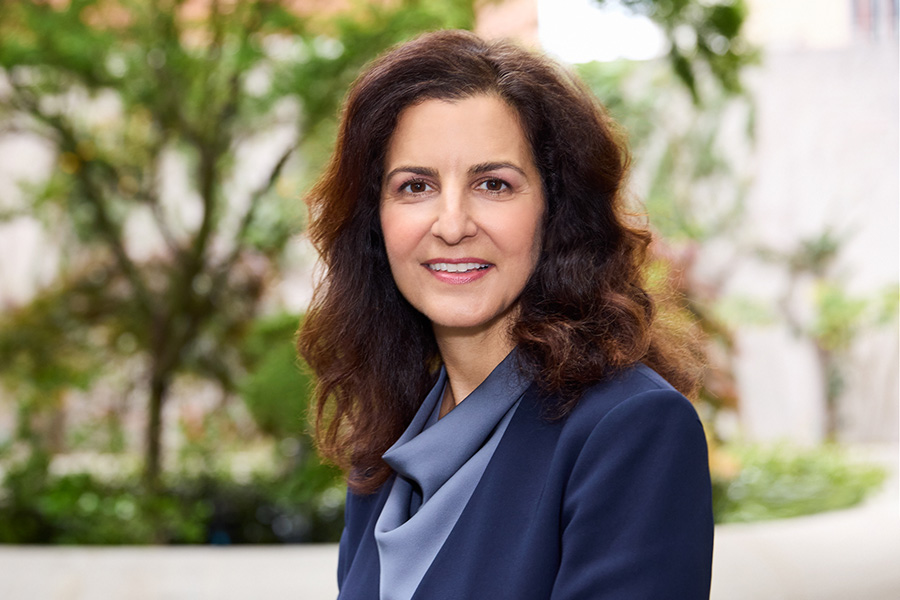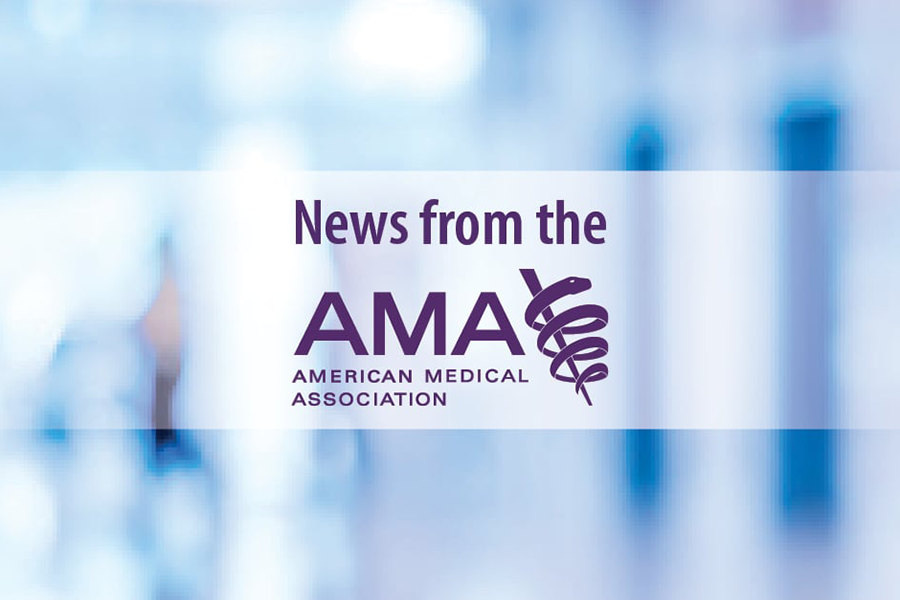August 9, 2023
In June, Dr. Maria Ansari became the first woman to assume the role of CEO and executive director of The Permanente Medical Group, the largest physician-led medical group in the nation. She was also named president and CEO of the Mid-Atlantic Permanente Medical Group. Together, the medical groups have more than 11,000 physicians and over 45,000 nurses and staff delivering care to more than 5.4 million Kaiser Permanente members in Northern California, Maryland, Virginia and Washington, D.C.
Ansari was also named co-CEO of The Permanente Federation.
She previously served as physician-in-chief and chief of staff at Kaiser Permanente San Francisco Medical Center since 2014. During the COVID-19 pandemic, Ansari served as the chief medical office liaison to the San Francisco Department of Public Health COVID Vaccine Taskforce.
She became chief of the Cardiology Department at Kaiser Permanente San Francisco Medical Center in 2007 and has served as chair of chiefs of cardiology at regional and national levels during her 19 years at Kaiser Permanente.
Ansari, a fellow of the American College of Cardiology, is a member of the American Society of Echocardiography and an assistant clinical professor of medicine at the University of California, San Francisco.
In this Q&A with Healthcare Finance News, Ansari talks about what drew her to healthcare, her new roles leading medical groups for one of the nation’s largest integrated health systems, what’s being done to address physician burnout, and how AI, technology and digital health will affect patient care.
Healthcare Finance News: Dr. Ansari, could you please tell us about yourself and your new roles leading The Permanente Medical Group, the Mid-Atlantic Permanente Medical Group and The Permanente Federation?
Dr. Ansari: I grew up in Michigan, where my father practiced medicine. I’d sometimes accompany my father on medical missions, and those trips highlighted for me medicine’s core principles.
For example, at the impressionable age of 16, I found myself traveling with my father in the mountains of northwestern Iran. We’d taken a Jeep off-road to get there, and we were far away from any villages. Yet each morning when we’d wake up and look outside, 200 people were lined up to receive care. All of them lived in the hinterlands and had heard the “doctor from America” was coming.
As I watched my father, I realized that what I witnessed was a universal language of healing. I was struck by the humanity of medicine, and thought, wow, a physician can go anywhere in the world and have something important to offer, something that connects us as human beings.
My dad is a cardiovascular surgeon, and he performed the first successful coronary artery bypass surgery in Iran in 1990. He spent two years training about 30 surgeons there to perform the procedure and developed a team locally to care for patients.
I was a medical student during this time and went on a rotation with him to learn. The experience taught me about the value of team-based care. It’s not just about the surgery. It’s also about the anesthesiologist, the nursing care, the pharmacist, the blood bank – the entire team that makes surgery possible.
I earned my bachelor of science and medical degree and completed my residency in internal medicine at the University of Michigan. I then completed a cardiology fellowship at the University of California, San Francisco (UCSF) and stayed on as faculty. While I was there, I did a lot of research on patients at Kaiser Permanente. That was a turning point for me. I saw the type of care and wraparound services that are provided by fully integrated and extremely high-quality health systems. For example, as a KP member you are 30% less likely to die of heart disease than a non-KP member.
When I joined Kaiser Permanente, I saw there was this huge culture of process and quality improvement. After joining the echocardiogram lab in San Francisco, I suggested getting us on a digital platform and we did. That went region-wide to all 21 medical centers, and soon I was put in charge of managing that lab.
I became assistant chief of cardiology at year two and the chief of cardiology by year three. Fast-forward a few years, and I became physician-in-chief and chief of staff of the Kaiser Permanente San Francisco Medical Center.
New roles
In my new roles, I really have three jobs: I serve as CEO and executive director of The Permanente Medical Group (TPMG) and president and CEO of the Mid-Atlantic Permanente Medical Group (MAPMG), two of the largest and most accomplished medical groups in the nation. Together, TPMG and MAPMG have more than 11,000 physicians and 45,000 staff delivering high-quality healthcare to more than 5.4 million Kaiser Permanente members in Northern California, Maryland, Virginia and Washington, D.C.
I also serve as co-CEO of The Permanente Federation, a consortium of all the Permanente Medical Groups in the nation. The federation supports the work of nearly 24,000 Permanente physicians and 80,000 staff who serve 12.7 million Kaiser Permanente members.
HFN: How do all three fit into the health system of Kaiser Permanente?
Dr. Ansari: The Permanente Medical Group, which is in Northern California, is the largest physician-led medical group in the United States. Our 9,500 physicians and 45,000 nurses and staff are delivering superior clinical outcomes that are having a positive and often life-changing impact on the health and well-being of our 4.6 million patients in Northern California.
The Mid-Atlantic Permanente Medical Group is on the East Coast and has a team of over 1,600 physicians. Permanente physicians there are responsible for the full continuum of medical care for 825,000 Kaiser Permanente members in Maryland, Virginia and Washington D.C.
Our Permanente Medical Groups are self-governed, physician-led, prepaid multispecialty medical groups that work collaboratively to provide care to Kaiser Foundation Health Plan members and patients throughout the nation.
The Permanente Federation is the national leadership and consulting organization for the eight Permanente Medical Groups, which together with the Kaiser Foundation Health Plans and Kaiser Foundation Hospitals comprise Kaiser Permanente.
HFN: What is the mission of the medical groups and The Permanente Federation?
Dr. Ansari: We have a mission to improve the health of our patients and our communities. Our physicians are driven by that mission and by doing what’s right for our patients. They believe in our integrated model of care, in which incentives are aligned with the best outcomes for patients.
What we offer is what other healthcare organizations are trying to emulate as they move toward value-based care. We are a prepaid and fully integrated model in which Kaiser Foundation Health Plans provide the insurance, but Permanente physicians deliver the value by providing the care. As mentioned earlier, the Permanente Medical Groups with the Kaiser Foundation Health Plans and Kaiser Foundation Hospitals comprise Kaiser Permanente.
Our foundation is built on prevention, primary care and population management. We have clinical autonomy to practice evidence-based medicine, and we have the systems and support to do it well. Our competitive advantage is not only that we are physician led and run but that our teams are coordinated and integrated across specialties and care sites. Permanente Medical Group doctors and care teams practice Permanente Medicine so every action, every decision is aligned with the patient’s interests.
HFN: What are your strategic areas of focus?
Dr. Ansari: For The Permanente Federation, our focus is on:
- Clinical and care delivery innovations. We want to further develop mechanisms we already have in place for ideas to percolate from the ground up and increase cross-functional teams so that we can spread ideas from the medical centers more rapidly. If we want to compete with other industries like venture capital firms and retail giants that are entering the realm of tech-enabled healthcare services, the good ideas of our physicians and teams must be readily heard.
- Access and operational performance. We deliver far more than physician access via a digital front door. Behind it is first-class specialty care, complex care, hospital care and primary care. No one else offers what we do, and we have the potential to offer so much more.
- Research and outcomes. We regularly conduct innovative research that is an integral part of our mission to provide members with quality healthcare. The potential here is huge. In fact, we just announced an Augmented Intelligence in Medicine and Healthcare Initiative Coordinating Center that will lead a national research effort focused on evaluating the implementation of artificial intelligence and machine learning algorithms to enhance diagnostic decision-making in healthcare.
- The workforce shortage. We need to make the Permanente Medical Groups the destinations to practice medicine and the preferred place to deliver care, whether you’re a physician, nurse, physician assistant, medical assistant or any other member of the care team. And we need to do this now to make sure we have the physicians and clinicians we need. In 2019, the U.S. faced a shortage of nearly 14,000 primary care physicians, and as the population of adults grows older and sicker, that gap is expected to grow to as many as 48,000 by 2034.
In Northern California, I have five immediate priorities for The Permanente Medical Group:
- Enhance recruitment and retention to help ensure we are fully staffed to do our best work. We believe that strong, collaborative team-based care is critical to sustaining our practice and delivering the best care. Like other industries, healthcare has not been immune to the great resignation. However, we’re starting to see people come back into the healthcare field after a hiatus, and we’re also seeing new entrants as people come out of medical and nursing schools.
- Address desktop medicine because it’s the No. 1 burnout factor for physicians. By “desktop medicine” I mean the amount of time a physician spends in front of a computer, and it includes everything from entering medical information collected during patient appointments to answering secure messages from patients that do not need to be seen by a physician, such as requests for directions, hours of operation, etc.
- Develop an urgent care strategy to respond to increasing patient demand for 24/7 convenience care.
- Build an innovation hub that engages and harnesses the power of our people.
- Secure our financial health because our members deserve access to affordable care.
HFN: Could you please talk about the current challenges facing physicians? We’ve all heard about the issue of burnout. Is this issue or any others something that you’ll be tackling in your new role?
Dr. Ansari: Absolutely. The COVID-19 pandemic exposed areas of opportunity and laid bare concerns that many of us have in healthcare. Physicians across the country feel burned out, both from the moral injury of the pandemic and continued backlogs in care.
Contributing to this burnout are the increasing demands of desktop medicine, and as I mentioned earlier that’s the amount of time a physician spends in front of a computer. We need to address this issue.
We also need to refine our strategy to meet the changing needs of our membership, physicians and staff, including more patient self-care tools and more flexible work opportunities for physicians and staff.
I want to address these issues in a very intentional way, with a high speed of execution. I believe we can and must reimagine a different kind of medical practice – one that balances the humanity of medicine with a performance-driven culture, and one that ensures we care for our people as well as our patients. We, and all healthcare systems today, need to fearlessly pursue change that leads to higher levels of excellence.
Physicians are at the highest level of the medical profession, with life-size responsibilities. As doctors, we want to support and treat our patients, in-person or virtually, to provide the best outcomes.
HFN: Anything else you’d like to address?
Dr. Ansari: Technology and digital health are having an enormous impact on healthcare, as it has on other industries, ranging from ridesharing services to home food deliveries. With one click, people want a response, and they want it now.
They also want more say over how and where their care is delivered. So, is there a way for some patients to manage their conditions independently and more effectively? Is there a way for them to get their questions answered using technology or other support teams?
I believe we can more fully leverage technology and teams to help our patients get what they need.
This article originally appeared in Healthcare Finance News.






